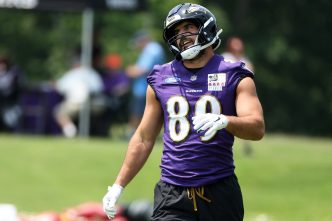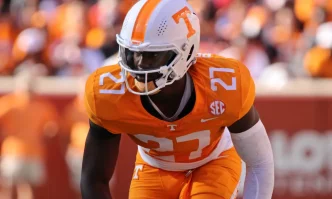In a tragic incident that unfolded in the heart of Manhattan, a shooter managed to claim four lives in an office building before taking his own. The shooter, identified as Shane Tamura, whose background includes playing high school football in California, reportedly aimed to attack the NFL’s headquarters but mistakenly entered the wrong elevator banks, as disclosed by New York City Mayor Eric Adams.
Tamura, 27, had worked in a Las Vegas casino. After initiating his rampage in the lobby on a Monday evening, the search revealed a significant personal grievance. Investigators uncovered a note in his wallet indicating he suffered from thoughts related to chronic traumatic encephalopathy (CTE), a degenerative brain disease connected to repeated head trauma common in contact sports like football. Notably, CTE can only be definitively diagnosed post-mortem.
In the note, Tamura expressed deep remorse and requested that his brain be examined for signs of CTE. The unfortunate correspondence referenced former NFL player Terry Long, who took his life in 2005 after being diagnosed with the disease, and criticized the NFL for allegedly downplaying the risks associated with player safety.
The note also mentioned “League of Denial,” a prominent PBS documentary detailing the NFL’s historical stance on concussions, alongside references to the investigative work of ESPN’s Mark Fainaru-Wada and Steve Fainaru, who chronicled similar themes. This undercurrent of frustration reflects an ongoing struggle within the sport regarding player health and safety.
While the NFL has grappled with the implications of CTE, it publicly recognized the connection between football and the disease in testimony before Congress in 2016 and has committed over $1.4 billion to settle related claims from retired players.
As the investigation into Tamura’s mental state unfolds, Adams indicated that the city’s medical examiner would determine whether he would be tested for CTE following his death. The medical examiner’s office confirmed that an examination of Tamura’s brain would be included in the complete autopsy process.
In the immediate aftermath of the attack, NFL Commissioner Roger Goodell condemned the violence, expressing gratitude towards the first responders and acknowledging the sacrifice of an off-duty officer, Didarul Islam, killed while performing security duties. Goodell informed the league’s staff of a “serious injury” to another employee and announced a bolstered security presence at NFL offices moving forward.
Coaches across the league shared their condolences and concern. New York Giants coach Brian Daboll emphasized the tragedy of the event, while Kansas City Chiefs coach Andy Reid reflected on the need for peace within the community. Voices from other teams, like the Minnesota Vikings and New Orleans Saints, noted their confidence in team security protocols while extending their sympathies to the victims’ families.
The overall sense of mourning extends beyond team walls, as public figures, including former President Donald Trump, expressed their sorrow for the victims’ families.
As investigators continue their work, the ramifications of this horrifying event will be felt throughout the football community and beyond, prompting conversations around safety, mental health, and the responsibilities of the league in protecting its players.








